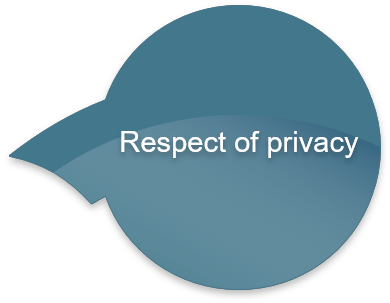
Undoubtedly, we have experienced significant developments in different aspects of our society. Education is not an exception. In recent years, we have experienced advances in Artificial Intellgence (AI), which have resulted in the development of AI-related technologies, such as ChatGPT by Open AI. However, I argue that although there are entitites that study and delineate policies on acceptable and ethical use of thechnology, unlike the advances in that we have experienced in its development, advances in regulation have not moved forward at the same pace or magnitude. Challenges involving ethical use and regulation of technolgy to prevent its use for malicious purposes continues to be a problem today as much as it has been a problem for decades.
The Office of Counter-terrorism of the United Nations, in partnership with its Interregional Crime and Justice Research Institute, released a study on the malicious use of AI for terrorist purposes. They make a projection of the AI market that will exceed over $100 billion by the year 2025. The good news is that, among others, AI will be supporting industries such as healthcare, commerce, banking, and of course, education. The bad news is that they also state the problem of malicious organizations that are technology savvy and possess the means to acquire and maintain a technology infrastructure, being early adopters of AI for their puposes, taking advantage of the fact that historically, technology is deplyed and implemented, and it's regluated after (UNOCT and UNICRI, 2022). In similar manner, the United Nations Development Programme released a report that places the role of new technologies in a social context, in its 2021/2022 Human Development Report, Uncertain times, unsettled lives. In the report, referring to the use of technology to both achieve successful control and the spread of misinformation around the COVID-19 pandemic, they state that "the hero and the villain in today’s uncertainty story are one in the same: human choice" (UNPD, 2022).
In the field of education, there are new studies and analyses around the responsible and ethical use of AI tools, with the intent of encouraging further study and respectful debate on the subject of implementation of new technologies, specifically AI, in classroms and in educaiton in general. However, without understanding of the issues surrounding AI implementation in education, we might not provide proper guidelines or best practices around AI tools (Mhlanga, 2023). What are such issues? As provided below, some are the same issues that we have experienced in many other aspects of education, from K-12, to higher education, to ABE instruction, to corporate training. Additionally, the capacity of some of the available AI tools to generate impressive prose in seconds has caught the attention of people with different perspectives on the repercussions of its capacity. Some present AI as a "doomsday" tool that will end the need for education as we know it, while some others deem it as state-of-the-art language model. Not surpringly, members of the different leaderships in the field of education, as well as corporate leaders, have limited knowledge and skills to evaluate AI applications because they were not taught to do so (Thurzo et al., 2023). That means that interpretations and opinions of AI made by education and corporate leaders do influence decisions made around its implementation and the development of policies around its acceptable use education. Details about Privacy and Objectivity follow. In future articles I'll explore Transparency, Perceptions and Accuracy.

Ethical Use of ChatGPT in Education
Respect of Privacy

The protection of user's data should be a priority. AI systems, such as ChatGPT, use large volumes of data from the Internet. As such, data collected from students by those systems should be protected, especially student's personal information. Currently, in the USA, we have the Children's Online Privacy Protection Act (COPPA), and in Europe, they have the General Data Protection Regulation (GDPR). Those laws aim a the objective of requiring organizations to protect data of individuals. However, since this planet is not composed of just the USA and Europe, there have been similar initiatives taken by other governments, such as the Personal Data Protection Act No. 11 of 2022 ("Tanzania DP Act") that was passed and assented by the President of Tanzania in November 2022. The laws relate to all data, which should include student data, such as personal information, grades and assessment results.
To sustain ethics and accountability in the global education sector, efforts should be made to regulate the access and use of data in all parts of the world. It's not possible to guarantee preservation of the integrity, ethics and professional responsibility in education without ensuring that the best efforts are being made to safeguard privacy and access to student data.
Equity, Objectivity and Non-discrimination

Equity in education refers to conditions that ensure that all students receive what they need to be successful through the intentional design of the learning experience. Equity does not mean equality, although both concepts are related. While the two terms seem nearly identical, equity and equality have vastly different meanings. Equality in education means that every student gets the same resources and opportunities. Examples of equality in education are when institutions receive the same funding, or institutions that have open admission policies, where all students who meet the basic education requirements are admitted. In instructional design, we ensure equality by granting equal access to all the instructional materials that we create. Equality is important and essential, but it is not sufficient for students of socially disadvantaged backgrounds to succeed when pursuing higher education.
Equity in education, not only allows equal access to all students, but also provides the means for equal participation and support to achieve success in their education experience, considering their particular situation. Equity is crucial in every classroom of every education institution to ensure that all students obtain the same positive outcomes regardless of where they started or what unique challenges they might experience. In instructional design, in addition to provide equal access to learning, we also provide the means for engagement, representation, action and expression when creating and implementing instructional materials. That implies that our designs can adapt to matching multiple ways in which students can be engaged or motivated to learn. In online education, equity also provides the technological means for all students to have the same learning experience, that is, access and support to all students’ technological needs.
References
- Chickering, A. W., and Gamson, Z. F. (1987). Seven Principles For Good Practice in Undergraduate Education. American Association for Higher Education - Bulletin.
- Gilbert, C. G., Crow, M. M., and Anderson, D. (2017). Design Thinking for Higher Education. Stanford Social Innovation Review, 16(1), 36–41. https://doi.org/10.48558/00MV-7982
- Glushko, R. J. (2013). The discipline of organizing. Bulletin of the American Society for Information Science and Technology, 40(1), 21–27. https://doi.org/10.1002/bult.2013.1720400108
- Grunschel, C., Patrzek, J., and Fries, S. (2012). Exploring reasons and consequences of academic procrastination: An interview study. European Journal of Psychology of Education, 28(3), 841–861. https://doi.org/10.1007/s10212-012-0143-4
- Iatrellis, O., Savvas, I. K., Kameas, A., and Fitsilis, P. (2020). Integrated Learning Pathways in higher education: A Framework enhanced with machine learning and semantics. Education and Information Technologies, 25(4), 3109–3129. https://doi.org/10.1007/s10639-020-10105-7

